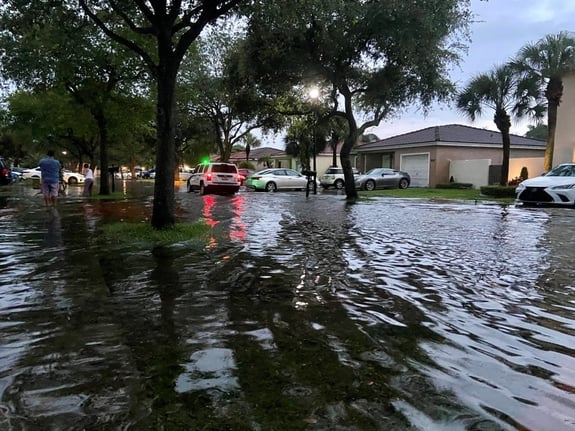It’s no doubt that global sea levels have been rising over the past century, and the rate has increased in recent decades. The Ocean Service estimates that in most areas, the rise is about one-eighth inch annually – a rate that barely noticeable from year to year, even for long-term coastal communities.
However, that slow encroachment is claiming residents’ land as well as associations’ common areas. Higher water levels also contribute to higher tides, king tides, which occur in conjunction with the solstice and full moon, and storm surges that erode beaches and redeposit sand where it can alter currents and affect shipping channels.
If you have higher water levels than you did a decade ago, then you have a greater likelihood of flooding during storms as sewers and levees are rendered ineffective because the water level is too high to accept the runoff.
In Jacksonville, I had a property that was on the Intracoastal and when the community was built in the 80’s, the water rarely came up into the community as there was plenty of marsh behind the community for the water to ebb and flow. By the time I managed this community in 2016, water was encroaching on the property regularly, even with small thunderstorms or wind storms which blew the water up into the community. Drains and sewers could not handle the influx of water, even from the smallest of storms anymore. Roads were regularly flooded and water blowing in from the Intracoastal literally “burned” landscaping from the salt water. The physical assault from salt water caused structural damage to our balconies and patios and parking lots, as well as damage to pools, equipment and pool decks.
So what do we do? The US Census data indicates that more than half of Americans live within 50 miles of the coast. That’s an increase of 45 percent since 1970. In the last decade, more than 2.5 million new residents have moved to Florida, which has more community associations than any other U.S. state. How will you protect your common areas and infrastructures over the long term?
As communities along the coast age, these problems will only worsen without intervention. Some communities are increasing the number of pump stations, and rebuilding roads and seawalls several feet above their current heights. Assessments in coastal communities should reflect the expectation that, over time, structures near the coast will need regular maintenance and in some cases, structures may need to be elevated, no doubt a significant expense.
Now is the time to monitor several locations that are prone to flooding already and investigate what options are available.
